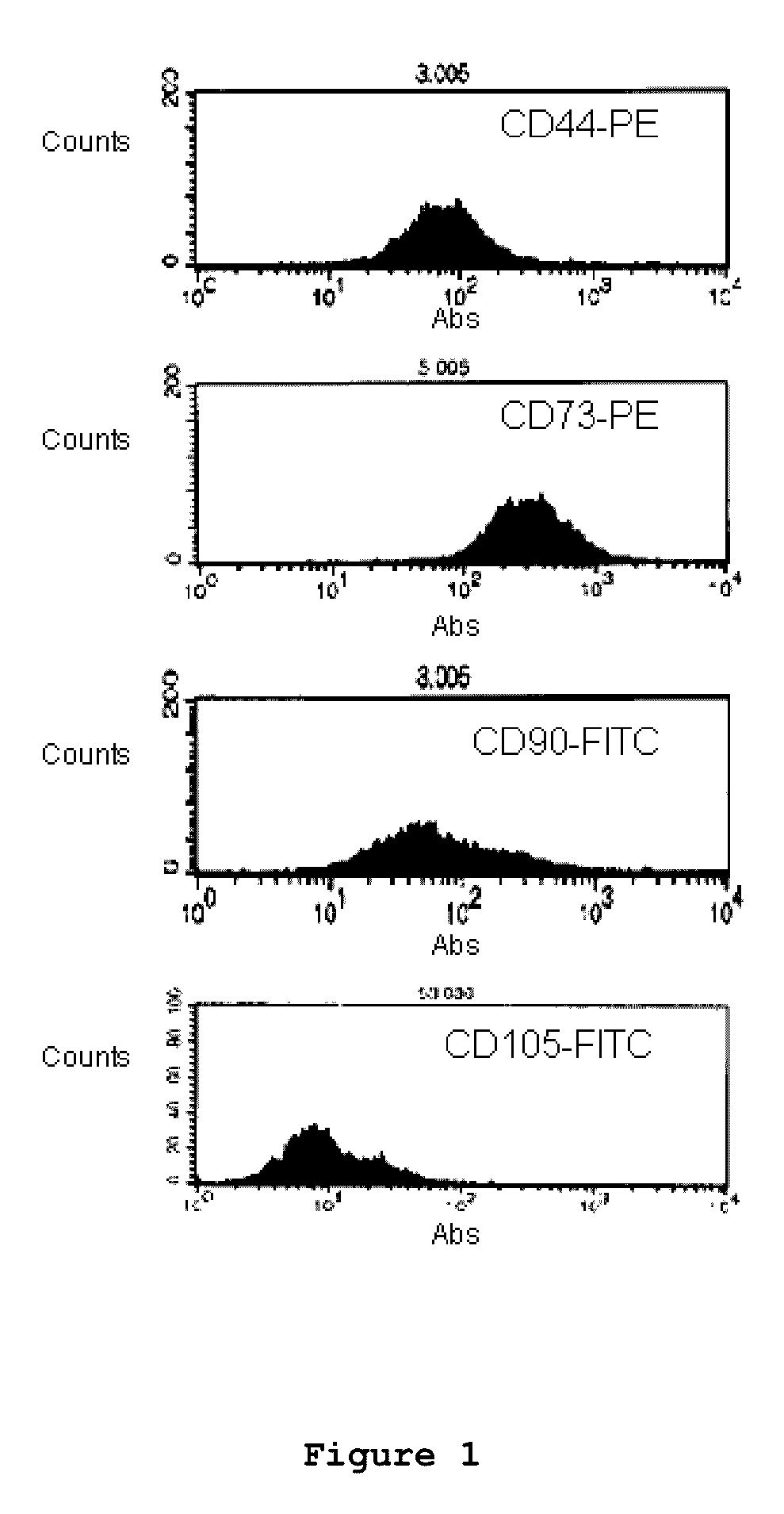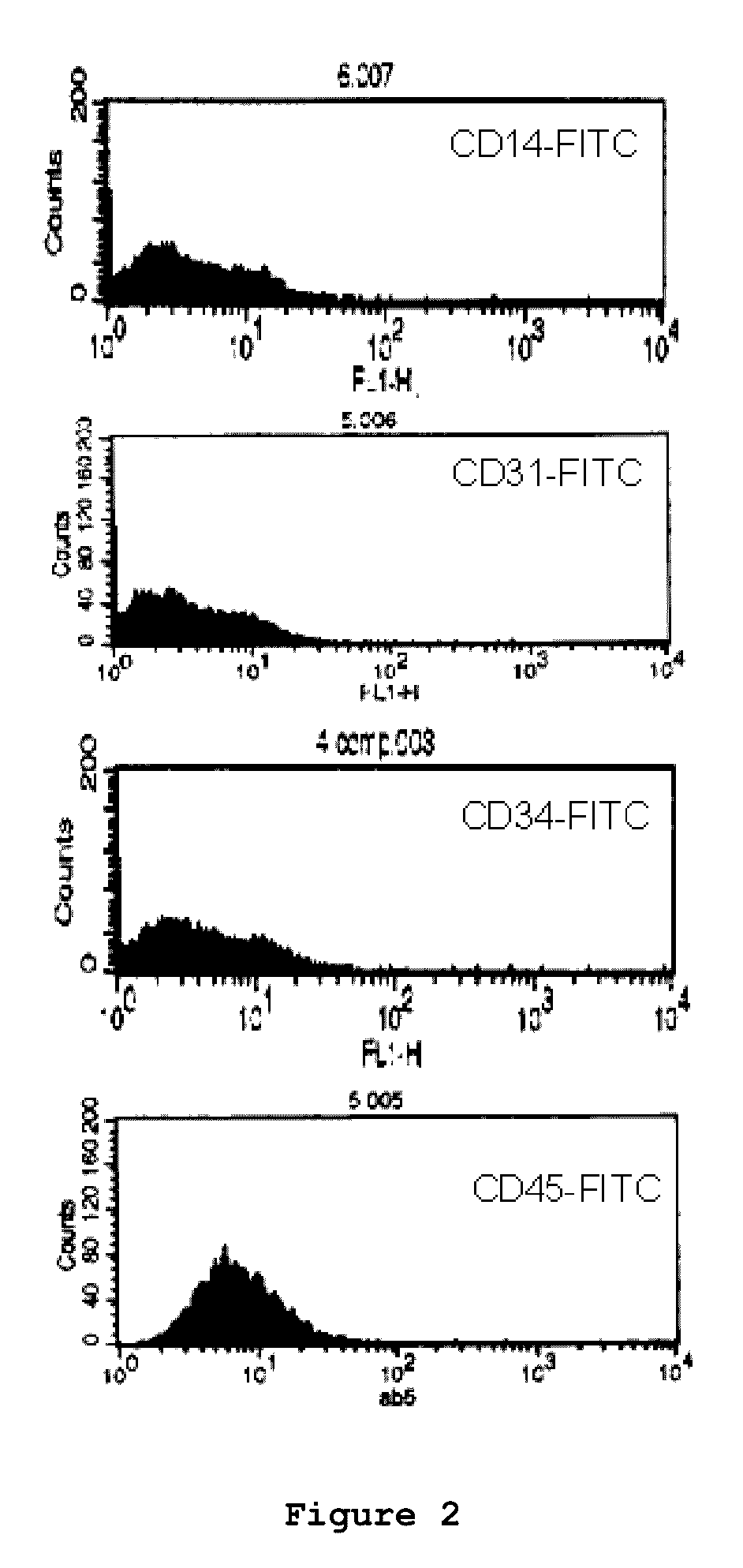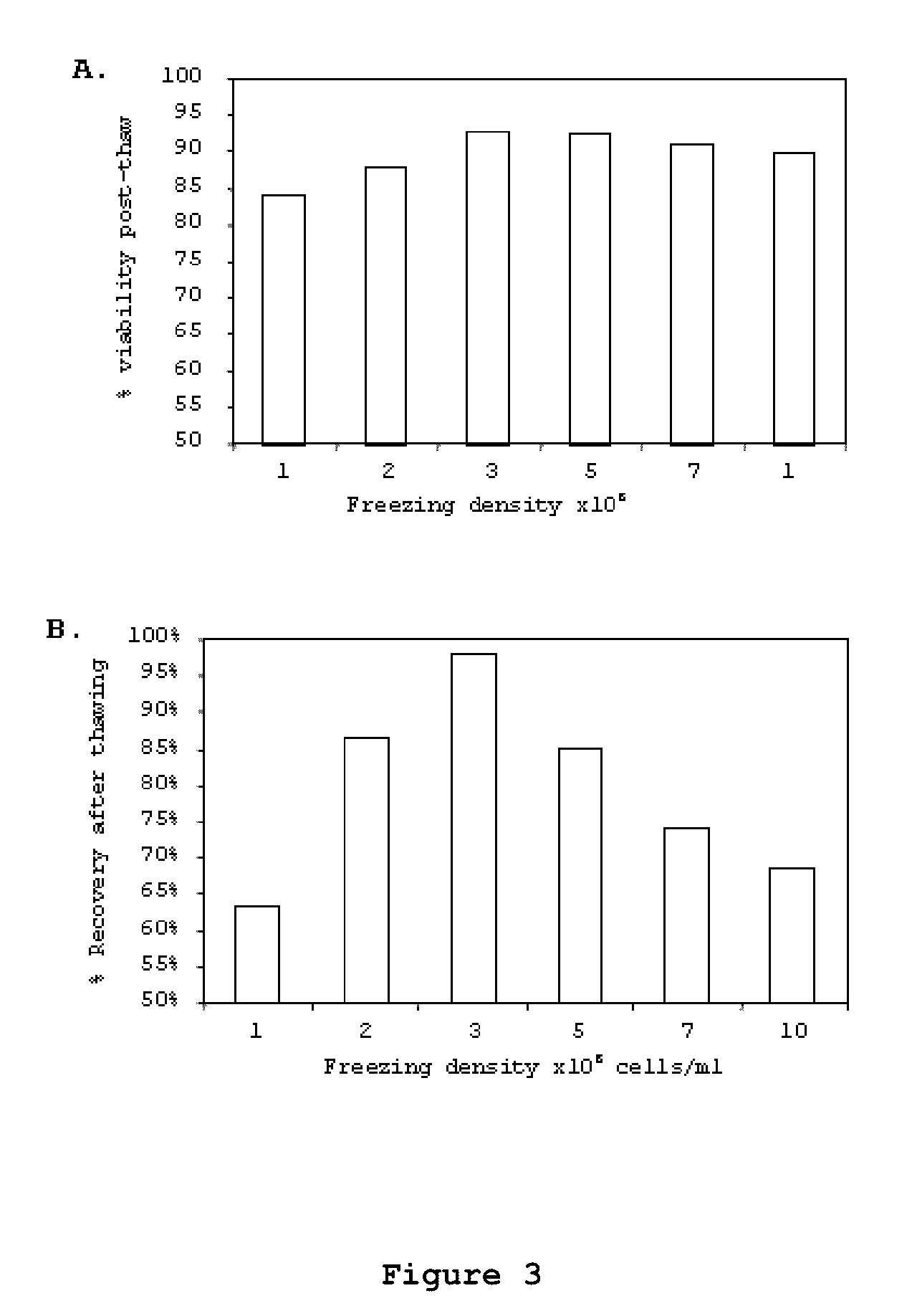Optimized and defined method for isolation and preservation of precursor cells from human umbilical cord
a technology of human umbilical cord and precursor cells, which is applied in the field of optimizing and defining methods for the isolation and preservation of precursor cells from the human umbilical cord, can solve the problems of limited utilization of mesenchymal precursor cells, ethical and safety issues, and general low final number of cells obtained, so as to achieve maximum efficiency and maximize efficiency
- Summary
- Abstract
- Description
- Claims
- Application Information
AI Technical Summary
Benefits of technology
Problems solved by technology
Method used
Image
Examples
example 1
Optimization of Type / Amount of Mechanical Manipulation and Fraction Dimension
[0070]The type of mechanical manipulation and size of initial tissue fragments were optimized maintaining a constant proportion of tissue mass (g), surface area of the bottom of the digestion flask (cm2), digestion volume (ml), and the total volume of the flask (ml), of approximately 1:2:2:37, considering that a fraction of 1 cm of human umbilical cord weighs about 1 g. After removing the amniotic membrane, several types of umbilical cord fractionation were tested: low (5 cm fractions); medium (2.5 cm fractions); high (0.3 cm fractions); and minced tissue. All fractionations were performed with the help of a scalpel and the samples processed using exactly the same conditions. It was concluded that the best yields, in terms of total cells at the end of P0 / umbilical cord mass / time, were obtained when using 2.5 cm fractions. Table 1 summarizes the results obtained qualitatively.
[0071]
TABLE 1Fractionation optim...
example 2
Optimization Relative to the Presence or Absence of Blood Clots within Umbilical Cord Vessels (1 Vein and 2 Arteries)
[0072]It is known that lysis of red-blood cells is toxic, reducing cell viability in vitro. Therefore, cell yields were compared when the digestion was performed in the presence or absence of blood clots. For the latter experiment, blood clots were removed with the help of a scalpel. It was concluded that blood clots had a negative effect upon yield, in terms of total cells at the end of P0 / umbilical cord mass / time. Table 2 summarizes the results obtained qualitatively.
[0073]
TABLE 2Blood clots: effects upon cell yield.PresenceAbsence−++Key:+++ = Excellent,++ = very good,+ = good,− = reasonable,−− = bad,0 = unsuccessful
example 3
Optimization Relative to Enzyme Nature, Individual or Combined Enzyme Action, and Enzyme Concentration in the Digestion Solution
[0074]In order to maximize yields, in terms of the number of cells with the desired characteristics isolated from the initial tissue, two initial approaches were adopted related to enzyme digestion: direct cell adhesion to the culture flask, in the presence of culture medium, with no digestion, and therefore in the absence of enzymes; and tissue dissociation with a single enzyme: 0.075% (w / v) collagenase II or 2.0% (w / v) pronase.
[0075]Since the utilization of collagenase II alone was the most efficient approach, this enzyme was then combined with other enzymes, specifically with Trypsin 0.125% (w / v) (in the presence or absence of EDTA 0.260 mM), with hyaluronidase 0.5% (w / v) alone, and with hyaluronidase 0.5% (w / v), combined with pronase 2.0% (w / v).
[0076]For these tests the optimal fraction size of 2.5 cm was used and the proportion of tissue mass (g), surf...
PUM
| Property | Measurement | Unit |
|---|---|---|
| pH | aaaaa | aaaaa |
| length | aaaaa | aaaaa |
| temperature | aaaaa | aaaaa |
Abstract
Description
Claims
Application Information
 Login to View More
Login to View More - R&D
- Intellectual Property
- Life Sciences
- Materials
- Tech Scout
- Unparalleled Data Quality
- Higher Quality Content
- 60% Fewer Hallucinations
Browse by: Latest US Patents, China's latest patents, Technical Efficacy Thesaurus, Application Domain, Technology Topic, Popular Technical Reports.
© 2025 PatSnap. All rights reserved.Legal|Privacy policy|Modern Slavery Act Transparency Statement|Sitemap|About US| Contact US: help@patsnap.com



